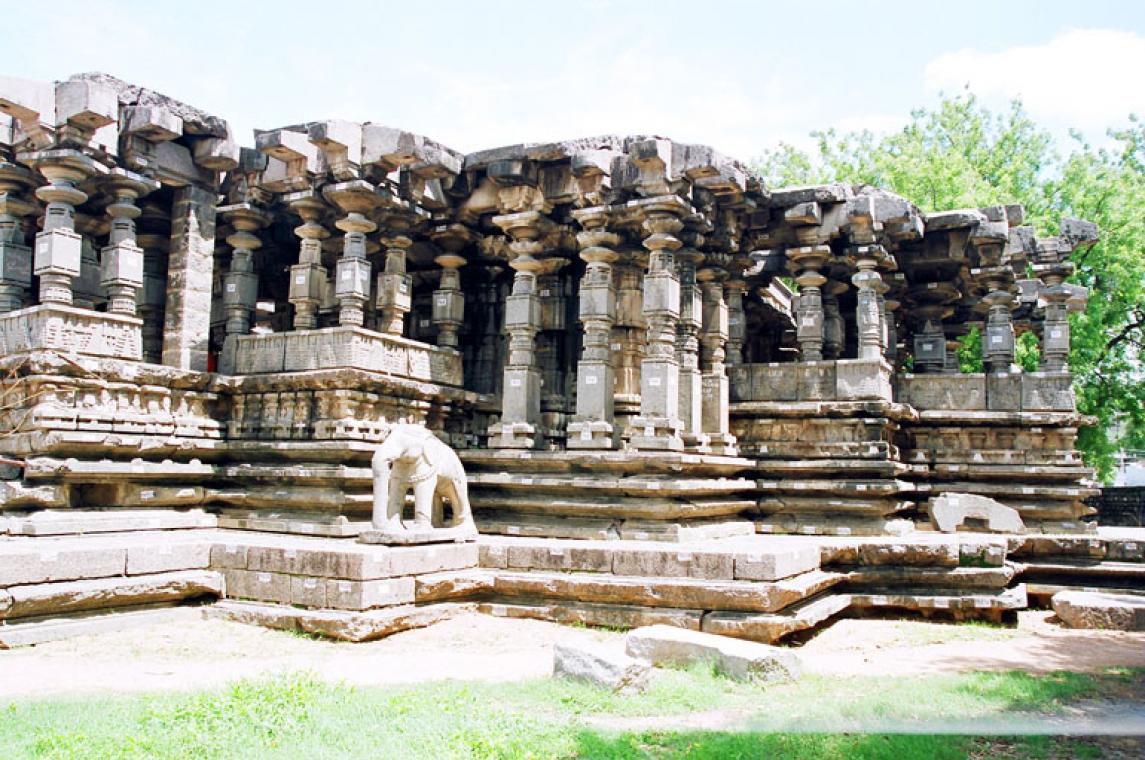Name of the Temple |
- The Thousand Pillar Temple
|
Location |
- Wārangal City , Āndhra Pradeśh
|
| How to reach there? |
- By Air: The closest airport to this place is located in Haidherabādh, around 170 km from Wārāngal. From the airport take the National Highway 202 north-east to reach the temple.
- By Train : The nearest railway station is located in Wārāngal, 6 km from Thousand pillar temple. From the railway station take the State Highway 240 north to reach the temple.
- By Road: Thousand Pillar temple is located in Hanumakonḍa, a place about 10 km from Wārāngal. Wārāngal is 145 km northeast of the state capital of Haidherabādh. It is connected through the National Highway 202 from Haidherabādh to Bhopālapaṭnam and the State Highway 240 from Wārāngal to Kodad.
|
Rulers/builders and Time Period |
- The Thousand Pillar Temple is one of the very old temples of South India built by the Kākathiyas of Chāḷukya dynasty and this stands out to be a masterpiece and achieved major heights in terms of architectural skills by the ancient Kākathiya viśhwakarma sthapathis.
- It is believed that the marvelous thousand pillared temple was built by King Rudhra Dheva in 1163 A. It was destroyed by the Mughal Empires during their invasion of South India .
- It comprises one temple and other building. There are one thousand pillars in the building and the temple, but one pillar will not obstruct another from any point of the temple to see the god in the other temple.
- The temple was built by King Rudhra Dheva in the 12th century (1163 A.D.). Dedicated to Lord Śhiva, Lord Viṣhṇu and Lord Sūrya, one thousand richly carved pillars and a magnificent black basalt Nandhi bull are the main attractions here.
|
Deity/Deities |
- Lord Śhiva
- Lord Viṣhṇu
- Lord Sūrya
|
Architecture Style |
- Built in the shape of a star, the temple is raised on a 1 metre high platform on the slopes of the Hanumakonḍa hill.
- Many small lingam shrines surround the gardens of this shrine.
|
Other Special Features |
- The pillars that support the central ‘Nāṭya Manṭapam’ (dance floor) are large and made of multiple blocks of stone.
- When you hear “Veyyi Sthambalu” (thousand pillars) you imagine a large no. of pillars.
|
Any Other/Remarks |
- Kākathiyas, worshipers of Lord Śhiva, wanted early morning sun rays to fall directly on Shiva Lingam. So, of the three shrines, Śhiva’s shrine faces east and other shrines face south and west. On the fourth side is Nandhi. Adding to the uniqueness, the Nandhi in 1000 pillar temple looks east, unlike most Nandhis in Indian temples that look west.
|
Bibliography |
|















